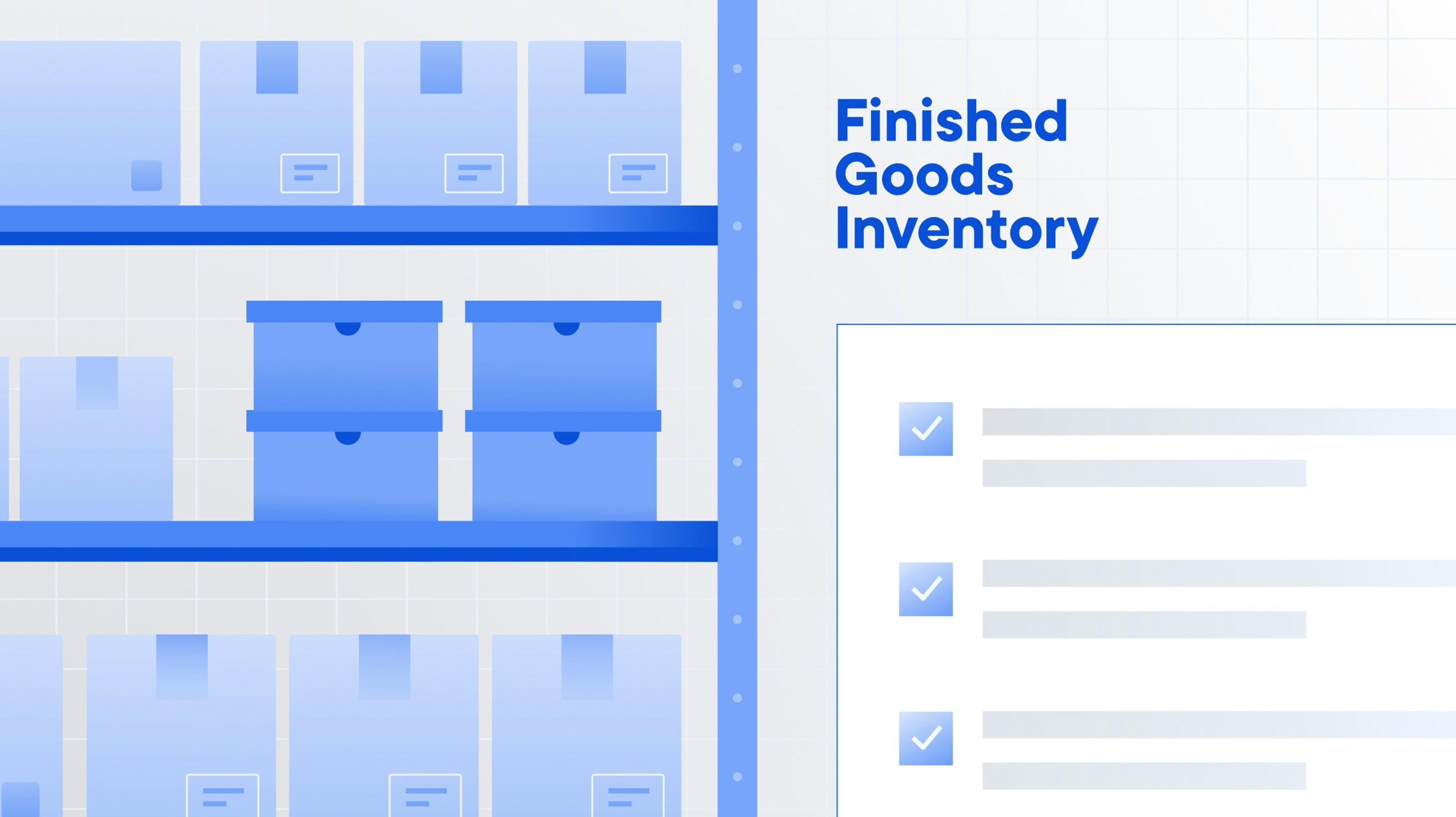Work-in-Process (WIP) Inventory: Why It’s Important and How to Calculate It

Let Circuit for Teams optimize the last-mile delivery aspect of your inventory management with streamlined routes, real-time driver tracking, and more.
Managing work-in-process (WIP) inventory efficiently is vital for streamlining your production process and controlling costs to make your business more competitive and profitable.
In this article, we will explore the significance of WIP inventory in inventory management and show you how to calculate it.
Key takeaways
- Work-in-process (WIP) inventory plays a crucial role in supply chain management, helping you control costs, plan production, and make better financial decisions.
- Calculating WIP inventory involves considering the beginning WIP inventory, adding the manufacturing costs incurred, and subtracting the cost of manufactured goods. This figure gives you real-time insight into your production costs.
- Lean manufacturing principles, such as just-in-time (JIT) production, continuous improvement (Kaizen), and Kanban, can significantly optimize WIP inventory management by reducing waste and improving profitability.
- Regular calculation and analysis of cost of goods manufactured (COGM) and cost of goods sold (COGS) are essential for effective WIP inventory management. This allows you to identify inefficiencies, reduce costs, and increase profit.

What is work-in-process (WIP) inventory?
Work-in-process (WIP) inventory refers to the unfinished goods still in the production process. It's an essential part of the supply chain, as it represents products currently transforming from raw materials into finished goods.
Effectively monitoring WIP inventory helps you gain insight into your production efficiency, make better-informed decisions to optimize your supply chain processes, and improve key supply chain KPIs.
For example, let’s take a company that manufactures bicycles. The WIP inventory would include all the bicycle components that are assembled but not yet completed. This could be anything from partially assembled frames to wheels waiting for tires. Monitoring WIP inventory levels can help identify bottlenecks, manage production lead times, and improve overall productivity.
Reducing or minimizing work-in-process inventory is highly recommended to avoid associated costs. Reducing it frees up capital, improves operational efficiency, and enhances your ability to meet customer demands and market changes.
Striking the right balance is crucial to optimize working capital and maintain smooth production operations.
While "work-in-process inventory" and "work-in-progress inventory" are often used interchangeably, there are some key differences between the two terms.
Work-in-process specifically refers to the unfinished goods in the manufacturing sector. Work-in-progress is a broader term encompassing unfinished projects or tasks in various industries, including construction, design, and creative fields.
Keep in mind that both terms underscore the importance of tracking and managing ongoing work for efficiency and productivity.
WIP inventory formula
The formula for calculating WIP inventory considers the beginning work-in-process inventory from the previous accounting period, the total manufacturing costs incurred during the period, and the cost of goods manufactured (COGM) to find your ending work-in-process inventory.
The total manufacturing costs include both direct labor and production costs. The formula for calculating work-in-process (WIP) inventory is as follows:
Ending WIP inventory = Beginning WIP inventory + Manufacturing costs - COGM
Let's walk through a real-world example calculation to better understand the formula:
Let’s take the bicycle manufacturing company mentioned earlier. Assume the company starts the month with a beginning WIP inventory of $10,000. During the month, it incurs $30,000 in manufacturing costs (cost of raw materials, labor etc.).
At the end of the month, the company completes and moves $35,000 worth of bicycles into its finished goods inventory, which represents the cost of goods manufactured (COGM).
Using the work-in-process inventory formula:
Ending WIP Inventory = ($10,000 + $30,000) - $35,000
Ending WIP Inventory = $5,000
The ending WIP inventory value of $5,000 represents the value of unfinished products still in the production process at the end of the month. This figure can help monitor and manage your production efficiency, capacity utilization, and inventory levels.
Tracking WIP inventory over time helps you identify trends, potential bottlenecks, and improvement opportunities, ultimately enhancing overall productivity and cost control within the manufacturing process.
Benefits of using WIP inventory
Managing your WIP inventory effectively can help you improve key metrics, such as cost control, production planning, decision-making, efficiency, and customer satisfaction.
Let's explore some key benefits that can positively impact your operations and bottom line.
Cost control
Managing WIP inventory allows you to control your overhead costs by preventing the excessive accumulation of unfinished goods.
Reducing excess WIP inventory can help you avoid unnecessary storage and handling expenses, minimize the risk of obsolescence, and boost cash flow by reducing tied-up capital.
For instance, identifying a bottleneck in your production process allows you to address the issue in a timely manner. This helps materials move through the production line smoothly and avoids costs associated with excess WIP inventory.
Production planning
Efficient production planning involves maintaining an accurate inventory account, including tracking WIP inventory, raw materials, and completed goods.
Keeping track of WIP inventory levels lets you better plan your production schedules, allocate resources efficiently, and manage lead times.
If you notice that your WIP inventory is consistently low, you may decide to adjust your procurement processes for an adequate supply of raw materials.
Conversely, high WIP inventory levels may indicate a need to increase production to finish more products or redistribute resources to address bottlenecks.
Better decision-making
Using WIP inventory enables you to make well-informed decisions regarding production, procurement, and resource allocation.
For example, tracking WIP inventory trends enables you to identify seasonal fluctuations in demand, allowing you to adjust your production schedules and procurement strategies accordingly.
This proactive approach can lead to more efficient operations and a competitive advantage in the market.
Efficiency
Monitoring WIP inventory is an effective way to detect inefficiencies in your production process and implement improvements.
Addressing bottlenecks, optimizing workflows, and reallocating resources as needed can help you reduce lead times and increase overall productivity.
A consistently high WIP inventory level may prompt you to add more resources or update equipment to improve efficiency and reduce excess WIP inventory accumulation.
Customer satisfaction
Effectively managing WIP inventory can lead to shorter lead times, more product availability, and improved customer satisfaction.
A well-organized production process and controlled WIP inventory levels help make sure the final product is available when needed, reducing delays and enhancing the overall customer service experience.
Meeting customer expectations and delivering products on time can help you build strong customer relationships and foster long-term loyalty.
How to manage WIP inventory

Optimizing WIP inventory levels is vital to improving inventory management processes. Moreover, WIP inventory is reflected on the company's balance sheet as a current asset, making its efficient management crucial for accurate financial reporting.
Let's dive into some practical steps for managing your WIP inventory effectively, enhancing your operational efficiency and overall business performance.
Calculate cost of goods manufactured (COGM)
The first step in effectively managing WIP inventory is calculating the cost of goods manufactured (COGM).
COGM represents the total cost of producing goods completed during a specific period. It includes direct materials, direct labor, and manufacturing overheads.
Knowing your COGM is crucial for managing WIP inventory because it allows you to understand how much it costs to turn your raw materials into finished goods. This can help you identify areas to cut costs.
For example, if a furniture manufacturer calculates its COGM and finds that the cost of human labor is significantly high, it might look into ways to streamline the production process or train workers to improve efficiency. This could lead to reduced labor costs, thereby reducing the COGM.
Calculate cost of goods sold (COGS)
Understanding your cost of goods sold (COGS) is another vital step in managing WIP inventory.
COGS is the total cost of all the goods a company produces and sells to customers during a specific period. It includes both the cost of materials and the direct labor costs involved in producing the goods.
The difference between the cost of goods sold and the cost of goods manufactured (COGM) lies in their respective stages.
COGM represents the total cost incurred in the production process during a specific period. COGS reflects the cost of goods sold during the same period, including production costs and additional expenses to make the goods sellable.
Calculating your COGS gives you a clearer picture of your operational costs and can pinpoint inefficiencies in your production cycle. Comparing COGS with sales revenue can also help you determine your gross margin: a valuable indicator of your company's financial health.
A significant increase in your COGS might indicate production inefficiencies, unusually high material costs, or wasted resources driving up costs. Addressing these issues can decrease the value of your WIP inventory, improving profitability.
Lean manufacturing principles

Lean manufacturing principles aim to reduce waste and improve operational efficiency within the production process.
Implementing these principles can help you manage WIP inventory more effectively. Let's dive into some of these principles:
- Just-in-time (JIT) production: This principle revolves around producing goods precisely when needed in the production process, reducing the need for storing excess inventory, including WIP inventory.Implementing JIT can help you minimize the costs associated with holding and handling WIP inventory. For example, a bakery might implement JIT by preparing fresh bread only when a customer places an order to avoid waste and surplus inventory.
- Continuous improvement (Kaizen): In the context of lean manufacturing, Kaizen refers to the philosophy of continuous improvement, where all members of an organization work together to improve processes and eliminate waste. Embracing Kaizen can help you consistently review and improve your production processes, leading to reductions in WIP inventory over time.
- Value stream mapping: This involves creating a visual representation of every process in the material and information flow. It helps identify waste and areas for improvement in the current process. This gives you a clear direction for optimizing WIP inventory management.
- Standardized work: This principle involves establishing precise procedures for each operator's work in the production process, reducing variability, and increasing consistency. It helps prevent overproduction and excess WIP inventory, as each worker follows a defined set of instructions.
- 5S workplace organization: This method helps create a clean, organized, and efficient work environment, leading to improved workflow and reduced WIP inventory. It relies on the following steps:undefinedundefinedundefinedundefinedundefined
- Kanban: Kanban is a scheduling system for lean manufacturing and JIT production. It uses visual signals to control the production process, allowing you to produce exactly what is needed (exactly when needed) to reduce WIP inventory.
Improve your bottom line with WIP inventory
Mastering WIP inventory management is key to cost control, efficient production planning, sound decision-making, and customer satisfaction. It can optimize your operations by streamlining processes, helping you identify bottlenecks, and reducing excess inventory.
Circuit for Teams can support your efforts by optimizing the last-mile delivery aspect of your inventory management with features like route optimization and real-time driver tracking. Boost your efficiency and improve your last-mile delivery today with Circuit for Teams.


